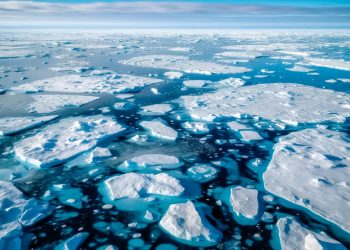WSS is working with Rosatomflot for ice-breaking assistance
 WSS is helping clients execute voyages through the Northern Sea Route (NSR) as this important new trade lane begins to open up new opportunities for shipping.
WSS is helping clients execute voyages through the Northern Sea Route (NSR) as this important new trade lane begins to open up new opportunities for shipping.
WSS is working with Russian Arctic shipping specialist Rosatomflot for ice-breaking assistance and has developed a programme to assists clients with technical, legal and insurance preparations they must satisfy to make the journey safely.
The NSR is currently open between 1 July and 1 November but holds out the long-term prospect of a faster route between Northern Europe and North Asia/Alaska, cutting the journey time on an Europe-Asia voyage from 34 days to 22 days. This has the potential to provide substantial savings in fuel consumption and emissions, as well as hastening the development of oil and gas reserves in the Arctic.
WSS Ships Agency Service Manager Eivind Jespersen said:
“Our experience is that many shipowners are closely following the development of the Northern Sea Route. Until now they have been reluctant to pursue this interest until their concerns are resolved. WSS Norway in partnership with WSS Russia is able to offer expert advice and assistance necessary to make voyages through the NSR a reality.”
In 2011, 34 voyages carried more than 820,000 tonnes of cargo via the NSR, a figure likely to rise to 1m tonnes in 2012. Summer sea ice levels on the route have decreased about 12% over the last decade and the warming climate ice could bring ice-free summers by 2050, according to Norwegian Polar Institute estimates.
Russia is promoting the NSR as an alternative to routeing vessels through the Panama or Suez canals and its government is preparing regulations for foreign civilian vessels with the corresponding law expected to be approved by Russian parliament this year.
WSS expertise in the region gives its experts first-hand knowledge of navigation conditions and practical considerations for safe operations in the NSR. WSS takes advantage of high quality meteorological data from the Norwegian Meteorological Institute for predictable ice conditions, including ice charts, edge positions and long term weather prognosis.

“The NSR is a new global route and comes with significant challenges in terms of navigation but the risks can be managed by good preparation,” continues Mr Jespersen. “We recommend extensive research and training prior to NSR voyages both onboard and on shore. Highly competent crew in particular makes a huge difference.”
The average cost for a single NSR passage is about 10% greater than a Suez canal transit, however this is negotiable for multiple transits. Each transit is considered a separate project as to preparations, such as application for permission to the Russian authorities, equipment and crew training.
Issues that owners need to be aware of before navigating the NSR include amendments to the terms of their P&I and hull and machinery insurance cover. In addition, paper charts and publications are in Russian only and ice pilots do not always speak languages other than Russian.
To make the journey, all vessels must comply with Russian rules for the NSR, including its guide and regulations for navigation and pilotage as well as requirements for vessel design and construction, ice operations and knowledge of tariffs for icebreaking services. At present it takes two to three weeks to get a ship accepted to transit the NSR and the vessel nominated must be the highest, 1A ice class.
WSS will act as agent only for principals requesting NSR transit and the principal will issue a letter of authorization to WSS which will negotiate the transit on their behalf.
Source: WWS
























































